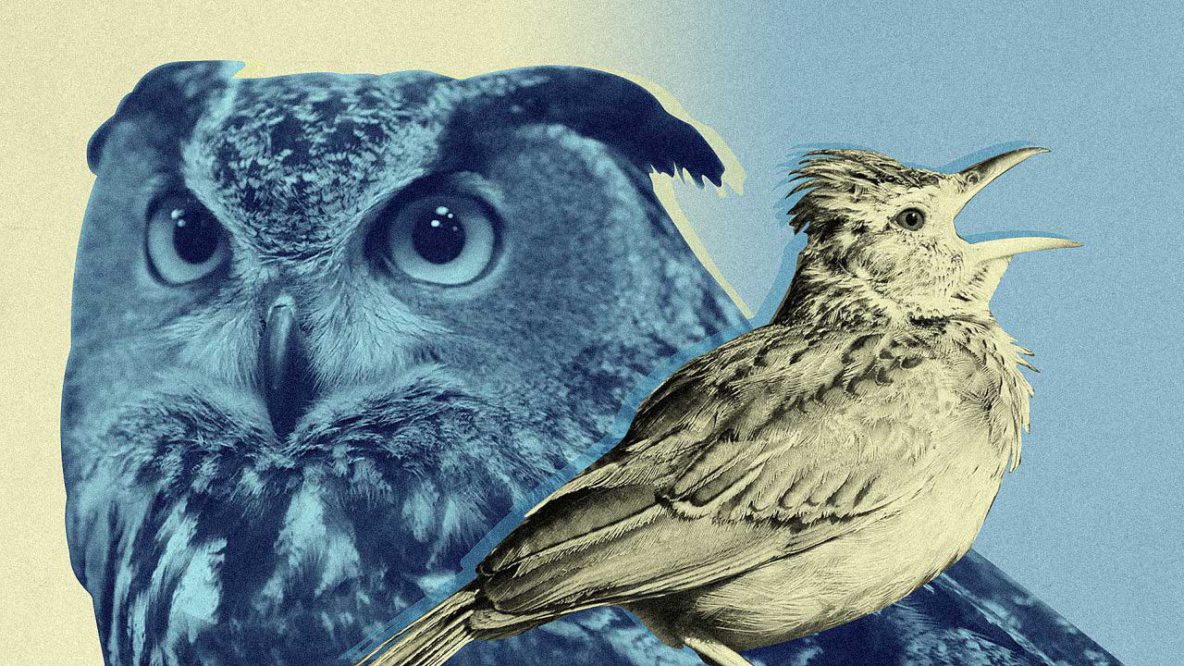Chances are you already know whether you’re a morning person or a night person (and if you don’t, just ask your significant other). What you might not know is that social scientists use pretty specific—and, by academic standards, pretty casual—names for these two chronotypes. “Larks” are up and at it early in the morning, and tend to hit the sack at a respectable evening hour; “owls” are most alert at night, and typically turn in long after dark.
These labels are less an either-or than a spectrum; chronotype can shift over a person’s lifetime, and recent work suggests adding two more subsets to the list: early to wake and late to bed, and late to wake but early bed. But generally speaking the larks-or-owls construct has stood the rigors of research, with evidence really growing since the development of a 19-part Morningness-Eveningness Questionnaire in the late 1970s that sorts folks into chronotypes based on things like when they’d ideally get up, how alert they feel in the morning, when they normally get tired, and so on. More involved than asking a spouse, but effective. To read more from ERIC JAFFE, click here.
